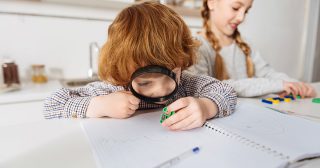ADHD Sleep Problems and Learning
March 5th, 2019Sleep problems often impact those with ADHD. In fact, studies show that 50% of those with ADHD have signs of sleep deprivation at least a few nights a week. Studies also show that a lot of kids’ ADHD symptoms seem to almost disappear when they get enough sleep!
Sleep problems can affect all of us. I recall with my kids, they often had trouble getting to sleep. And my grandkids, yes, they too quite often have trouble getting to sleep. I think part of the reason for this is that we are all so busy now. It is difficult for kids as well as adults to wind down.
Sleep is critical for our minds, memory, learning, and development. While you are sleeping, your brain organizes information, makes connections, and even solves problems. Sleep helps transform your short term memory into long-term memories. Susumu Tonegawa, the Professor of Biology and Neuroscience at MIT, discovered that you actually replay your memories from your day like video clips in your sleep before they get consolidated into long-term memories.
You know as well as I do that when you don’t get a good night’s sleep you tend to get sleepy during the day. When stress is put on you, you don’t cope as well. Small things can irritate you more easily. Learning is more difficult. Focus can almost be impossible.
ADHD Sleep Problem Tips
So, what can you do to help your kids get a better night’s sleep? How can you get that churning mind and or body to calm down? Earlier in the day, or before dinner, make sure to get some exercise like a walk, run, jumping jacks or playing at a local park. Exercise has shown to elevate the brain’s dopamine, norepinephrine and serotonin levels that also help focus and attention. It is much easier to sleep when your body is physically exhausted.
Set up a bedtime routine where you are calming things down. Help them pick out their clothes for the next morning. Be sure their backpack with homework assignments is packed up and ready by the door. No soda, iced tea or coffee before bedtime. Turn off the screens (television, iPads, etc.) at least 30 minutes before bedtime. Screens disrupt the circadian rhythms, disrupting and suppressing the release of the sleep-promoting hormone melatonin which makes it more difficult to sleep. It can also help to dim some of the lights in your house or turn a couple off while you are preparing for bed.
Some tips to help people get in the mood for bedtime:
- A warm bath
- Soft music (I use Mark Romero or Gary Lamb) They can also be used during homework time.
- Read a story
- A back rub
- Chamomile Tea
- Helps calm your nervous system as well as soothes and supports digestion.
- Banana Tea
- Cut off both ends of a banana and put it with the peel and all into a small pot of water. Boil it for about 10 minutes pour it through a colander to catch the peel.
- Add some Ceylon cinnamon for a little more flavor.
- The potassium and magnesium from the banana are great for relaxing the muscles. They are also beneficial to the nervous system.
- Essential Oils
- Try some essential oils in a diffuser in the bedroom.
- Lavender oil works wonderfully for calming one down.
- A few drops of cypress oil on the pillow can help too.
If you or your kids seem to wake up congested or coughing, see about getting some household plants to help filter the air and generate oxygen. Snake plants (Sanseveria) and aloe vera can be great additions to the house. Also, see about running a HEPA air purifier in your rooms while you sleep.

Bonus ADHD Tip: Keep Your Bedrooms Clean
- Additionally, keep the walls and floor of the bedrooms simple. Visually stimulating material can be distracting and keep you up.
- Keep toys, books, and games on shelves or in bins, sorted according to use.
- If you have enough space in the bedroom, place the bed perpendicular to the wall instead of next to it. Then, use the bed as a divider in the room. One side of the room can be for books, school-related items, and study items. The other side of the room can be for toys and games.
- If you can’t divide the room in half in that manner, it is still okay, but you will need to still create some specific zones to categorize your belongings. You can help your kids with this by relating how the kitchen is organized… the pots and pans go here, the plastic containers go here, the silverware goes in this drawer, the cooking spoons go in that drawer. In the same way, have bins or containers or shelves that bins.

Bonnie Terry, M. Ed., BCET is internationally recognized as America’s Leading Learning Specialist. She is an award-winning author, learning disability specialist, and board-certified educational therapist.
Bonnie is the best-selling author of Five Minutes to Better Reading Skills, Ten Minutes to Better Writing and Study Skills, and The Sentence Zone Game.































